Discrete Choice and Random Utility Models
PyCon Ireland
Data Science @ Personio
and Open Source Contributor @ PyMC
11/11/23
Preliminaries
I am not an Economist
- I’m a data scientist at Personio
- Bayesian statistician,
- Reformed philosopher and logician.
- Website: https://nathanielf.github.io/
Disclaimer
None of Personio’s data was used in this presentation
Code or it didn’t Happen
The worked examples used here can be found here
The Pitch
Predictive Models are inadequate decision making tools in product demand analysis.
Accept no substitutes for bayesian discrete choice models and causal inference.
Agenda
- History and Background
- Modelling Choice Scenarios
- Market Structure and Substitution Patterns
- Model Adequacy and Counterfactuals
- Individual Heterogenous Utility
- Conclusion
- The World in the Model
History and Background
A brief survey of historical use-cases and the kinds of problems Bayesian discrete choice models can solve.
McFadden and BART
“Transport projects involve sinking money in expensive capital investments, which have a long life and wide repercussions. There is no escape from the attempt both to estimate the demand for their services over twenty or thirty years and to assess their repercussions on the economy as a whole.” - Denys Munby, Transport, 1968 ”


Revealed Preference and Predicting Demand
Self Centred Utility Maximisers?
- The assumption of revealed preference theory is that if a person chooses A over B then their latent subjective utility for A is greater than for B.
- Survey data estimated about 15% of users would adopt the newly introduced BART system. McFadden’s random utility model estimated 6%.
- He was right.

- Copernican Shift: He estimated utility to predict choice, rather than infer utility from stated choice.
General Applicability of Choice Problems
- These models offer the possibility of predicting choice in diverse domains: policy, brand, school, car and partners.
- Hard Question: What are the attributes that drive these choices? How well are they measurable?
- Harder Question: How do changes in these attributes influence the predicted market demand for these choices?
Note on Model Evaluation
Replicating the Super Soldier Program

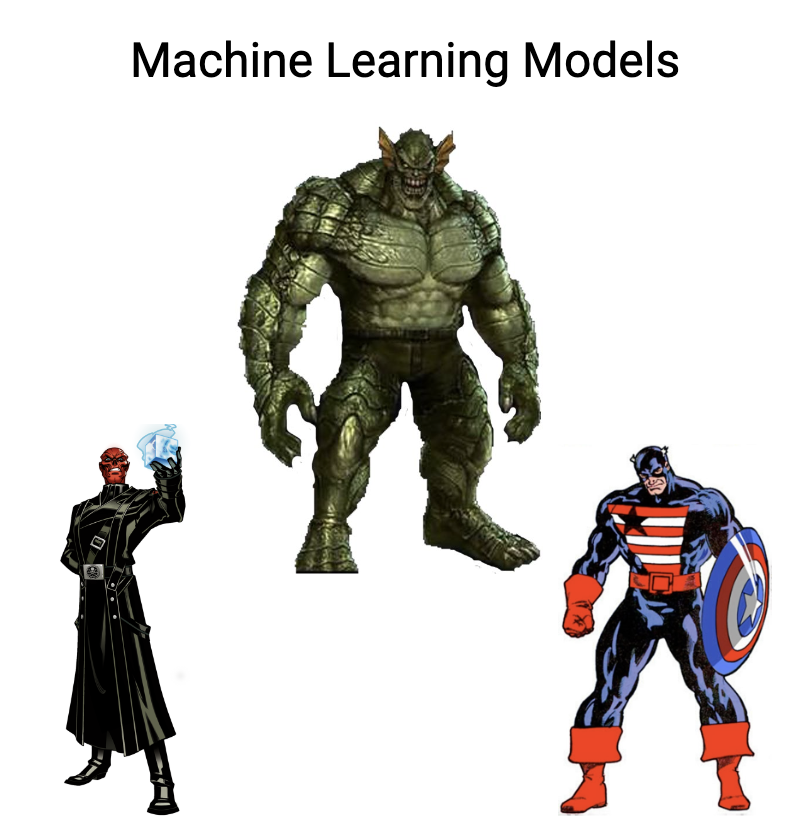
Note on Model Evaluation
Replicating the Super Soldier Program
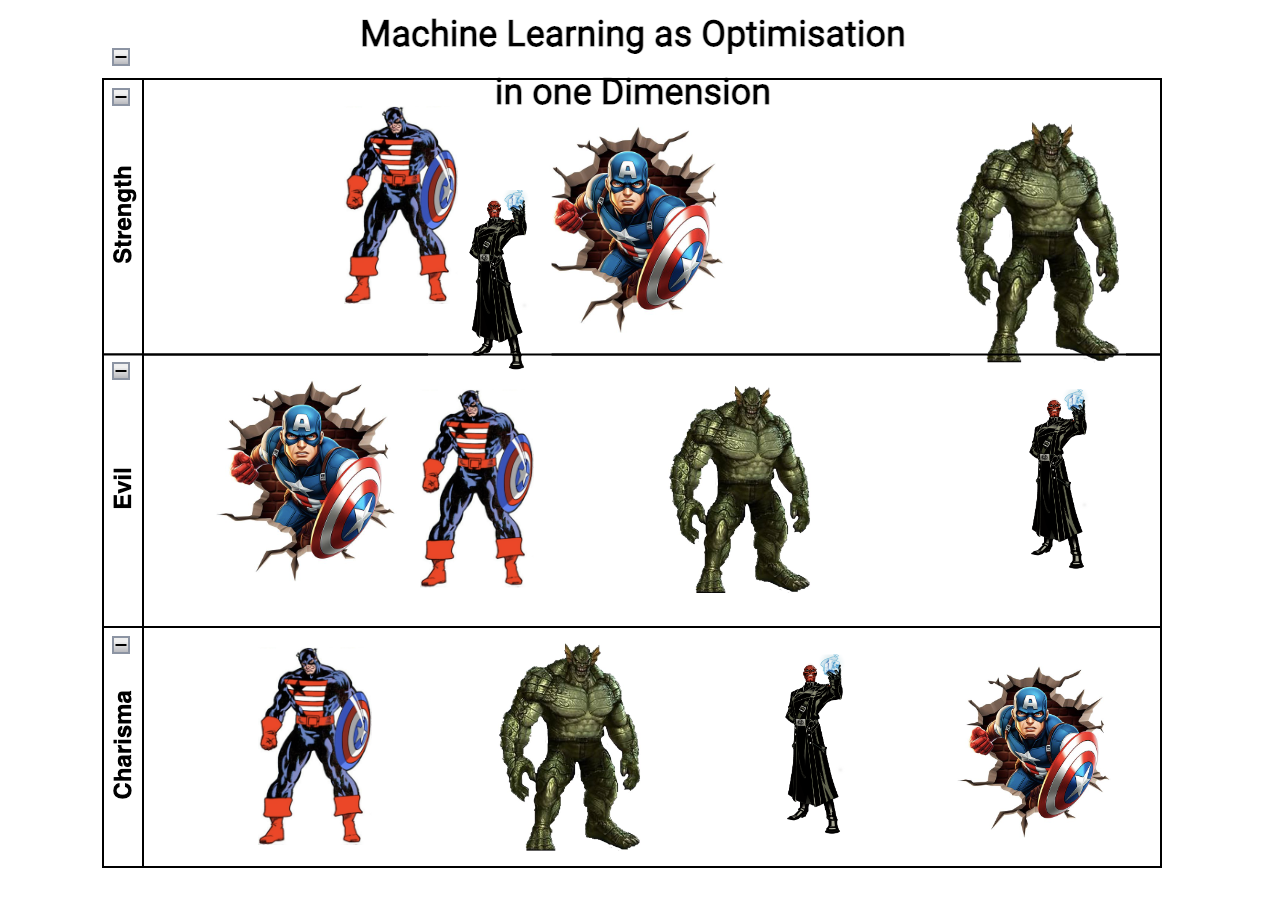

Modelling Choice Scenarios
We elaborate the basic multinomial model for choice and a problem with it.
Choice: The Data
Gas Central Heating and Electrical Central Heating described by their cost of installation and operation.
| choice_id | chosen | ic_gc | oc_gc | … | oc_ec |
|---|---|---|---|---|---|
| 1 | gc | 866 | 200 | … | 542 |
| 2 | ec | 802 | 195 | … | 510 |
| 3 | er | 759 | 203 | … | 495 |
| 4 | gr | 789 | 220 | … | 502 |
The Multnomial Model:
Product Specific Intercepts
\[ \begin{split} \begin{pmatrix} \color{red}{u_{gc}} \\ \color{purple}{u_{gr}} \\ \color{orange}{u_{ec}} \\ \color{teal}{u_{er}} \\ 0 \end{pmatrix} = \begin{pmatrix} \color{red}{\alpha_{gc}} + \color{blue}{\beta_{ic}}gc_{ic} + \color{blue}{\beta_{oc}}gc_{oc} \\ \color{purple}{\alpha_{gr}} + \color{blue}{\beta_{ic}}gr_{ic} + \color{blue}{\beta_{oc}}gr_{oc} \\ \color{orange}{\alpha_{ec}} + \color{blue}{\beta_{ic}}ec_{ic} + \color{blue}{\beta_{oc}}ec_{oc} \\ \color{teal}{\alpha_{er}} + \color{blue}{\beta_{ic}}er_{ic} + \color{blue}{\beta_{oc}}er_{oc} \\ 0 + 0 + 0 \end{pmatrix} \end{split} \]
The Multnomial Model:
Utility determines choice probability of choice:
\[\text{softmax}(\color{green}{u})_{j} = \frac{\exp(\color{green}{u_{j}})}{\sum_{q=1}^{J}\exp(\color{green}{u_{q}})}\]
choices determine market share where:
\[ s_{j}(\mathbf{\color{blue}{\beta}}) = P(\color{green}{u_{j}} > \color{green}{u_{k}}; ∀k ̸= j) \]
The Maximum Likelihood Estimation Strategy
The model is traditionally estimated with maximum likelihood caclulations.
\[ L(\color{blue}{\beta}) = \prod s_{j}(\mathbf{\color{blue}{\beta}}) \]
or taking the log:
\[ l(\color{blue}{\beta}) = \sum log(s_{j}(\mathbf{\color{blue}{\beta}})) \] \[ \text{ We find: } \underset{\color{blue}{\beta}}{\mathrm{argmax}} \text{ } l(\color{blue}{\beta}) \]
Results are often brittle!
Bayesian Estimation
To evaluate the integrals in the Bayesian model we use MCMC to estimate conditional probabilities of the joint distribution.
\[\underbrace{\color{blue}{\beta}}_{\text{prior draws}} \sim Normal(0, 1) \]
\[ \underbrace{p(\color{blue}{\beta} | D)}_{\text{posterior draws}} = \frac{p(\mathbb{\color{blue}{\beta}})p(D | \color{blue}{\beta} )}{\int_{i}^{n} p(D | \mathbf{\color{blue}{\beta_{i}}})p(\mathbf{\color{blue}{\beta_{i}}}) } \]
Priors can be used flexibly to regularise and improve reliability of estimation across structural causal models.
The Model:
Utilities in Code
with pm.Model(coords=coords) as model_2:
## Priors for the Beta Coefficients
beta_ic = pm.Normal("beta_ic", 0, 1)
beta_oc = pm.Normal("beta_oc", 0, 1)
alphas = pm.Normal("alpha", 0, 1, dims="alts_intercepts")
## Construct Utility matrix and Pivot using an intercept per alternative
u0 = alphas[0] + beta_ic * wide_heating_df["ic.ec"] + beta_oc * wide_heating_df["oc.ec"]
u1 = alphas[1] + beta_ic * wide_heating_df["ic.er"] + beta_oc * wide_heating_df["oc.er"]
u2 = alphas[2] + beta_ic * wide_heating_df["ic.gc"] + beta_oc * wide_heating_df["oc.gc"]
u3 = alphas[3] + beta_ic * wide_heating_df["ic.gr"] + beta_oc * wide_heating_df["oc.gr"]
u4 = np.zeros(N) # Outside Good
s = pm.math.stack([u0, u1, u2, u3, u4]).T
## Apply Softmax Transform
p_ = pm.Deterministic("p", pm.math.softmax(s, axis=1), dims=("obs", "alts_probs"))
## Likelihood
choice_obs = pm.Categorical("y_cat", p=p_, observed=observed, dims="obs")The Problem: Interpreting the Model
Rate of Substitution
The beta coefficients in the model are interpreted as weights of utility. However, the precision in these latent terms is relative to the variance of unobserved factors.
The utility scale is not fixed, but the ratio \(\frac{\beta_{ic}}{\beta_{oc}}\) is invariant.
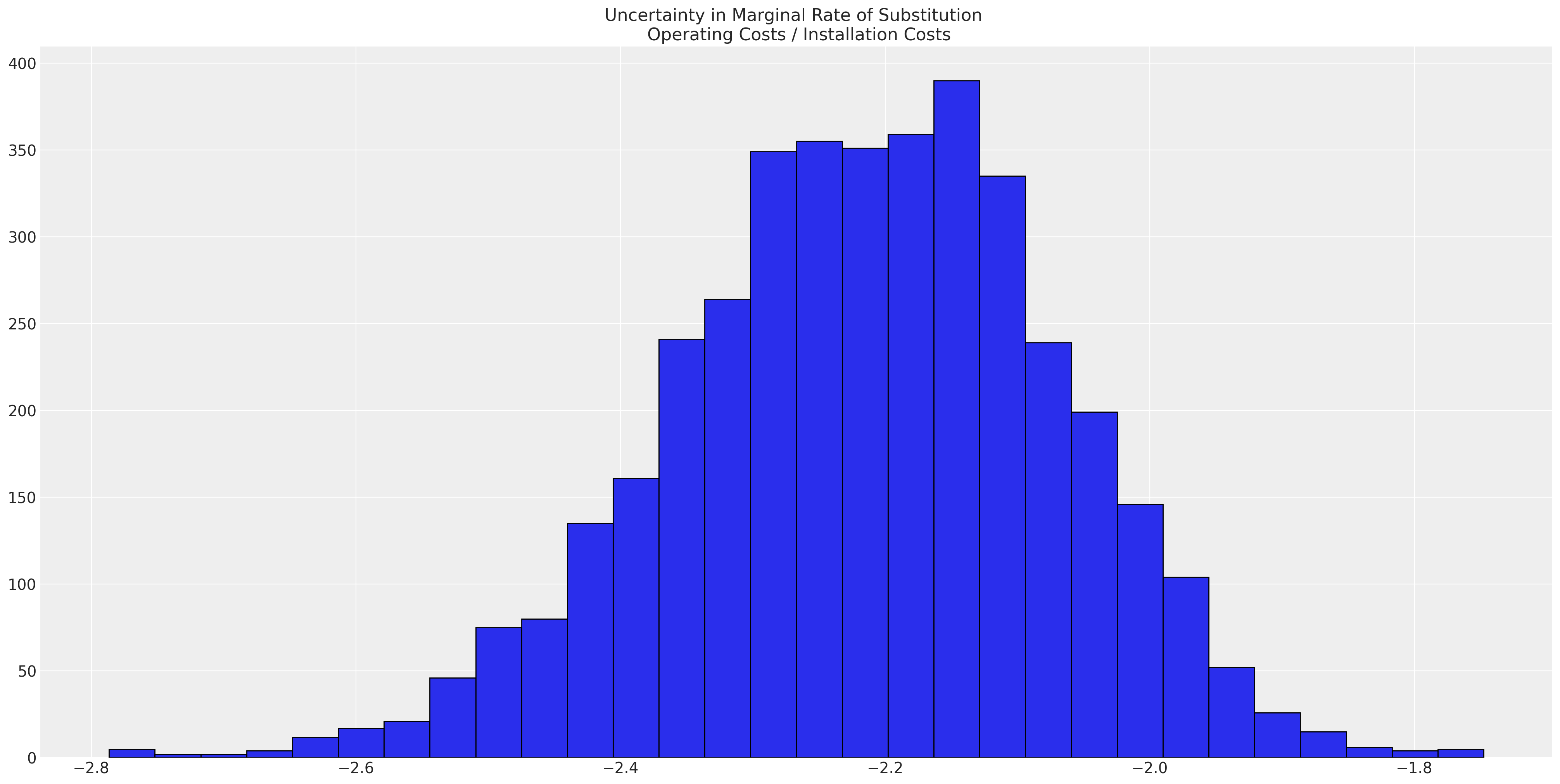
The Problem: Model Structure:
The Process of Bayesian Updating calibrates the parameter estimates against the data
The Problem: Model Fit
Posterior Predictive Distribution
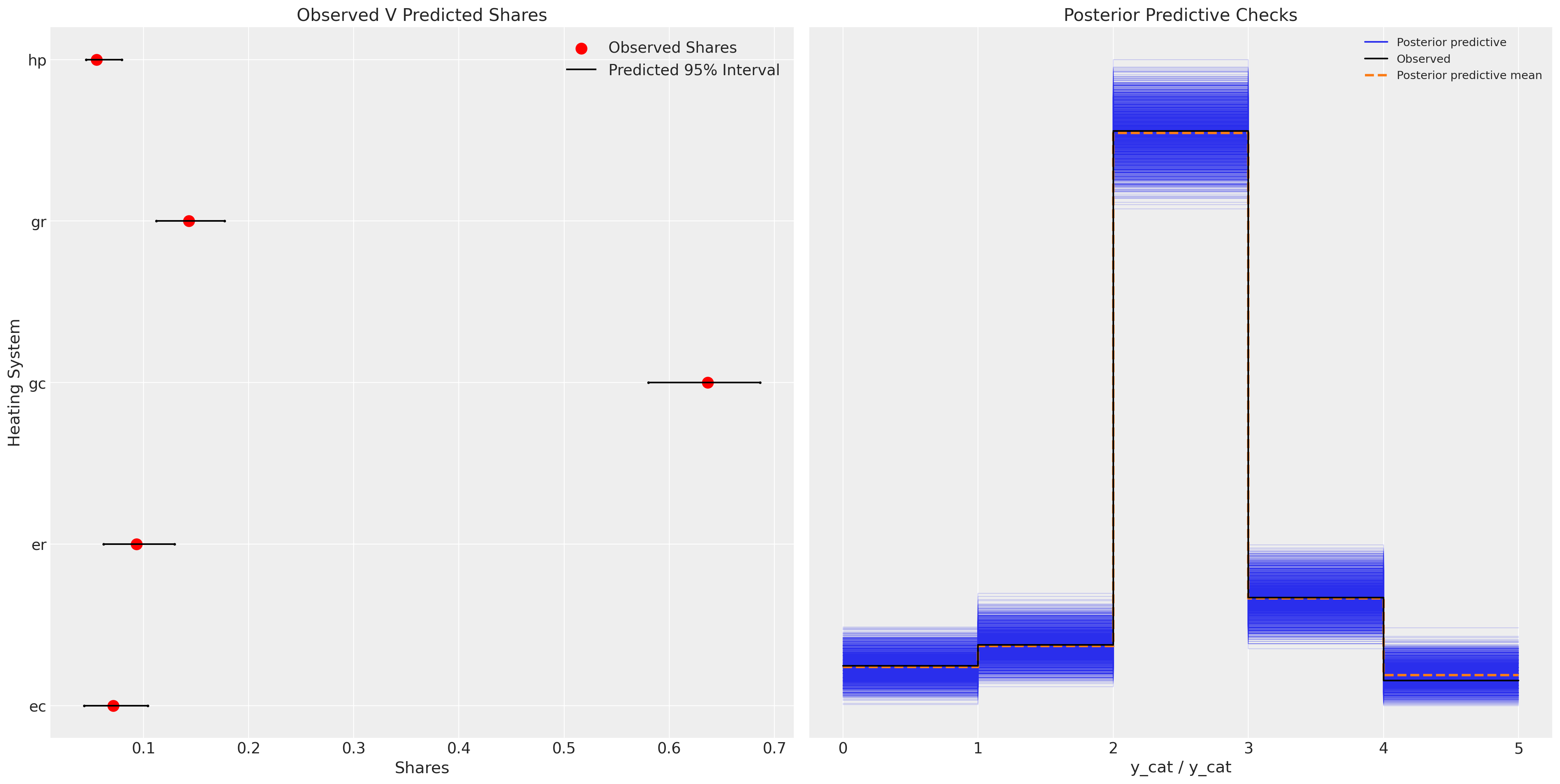
The model successfully predicts observed market share
The Problem: IIA
New Products Cannibalise Equally from all Alternatives
- Suppose a market choice between transport modes is determined by the above model.
- Red Bus or Car are you initial Options. Assume \(s_{\color{red}{bus}}(\beta) = s_{car}(\beta)\). Market Share is 50% to each option.
- Introduce the Blue Bus Option, then the Independent characteristics of the utility specification implies that \(s_{\color{red}{bus}}(\beta) = s_{car}(\beta) = s_{\color{blue}{bus}}(\beta)\)
- This implies an implausible substitution pattern for real markets.1
Market Structure and Substitution Patterns
Model tries to account for pathological patterns of sustitution between goods by incorporating covariance structures.
Adding Correlation Structure
Dependence in Market Share
\[ \alpha_{i} \sim Normal(\mathbf{0}, \color{brown}{\Gamma}) \]
\[ \begin{split} \begin{pmatrix} \color{red}{u_{gc}} \\ \color{purple}{u_{gr}} \\ \color{orange}{u_{ec}} \\ \color{teal}{u_{er}} \\ 0 \end{pmatrix} = \begin{pmatrix} \color{red}{\alpha_{gc}} + \color{blue}{\beta_{ic}}gc_{ic} + \color{blue}{\beta_{oc}}gc_{oc} \\ \color{purple}{\alpha_{gr}} + \color{blue}{\beta_{ic}}gr_{ic} + \color{blue}{\beta_{oc}}gr_{oc} \\ \color{orange}{\alpha_{ec}} + \color{blue}{\beta_{ic}}ec_{ic} + \color{blue}{\beta_{oc}}ec_{oc} \\ \color{teal}{\alpha_{er}} + \color{blue}{\beta_{ic}}er_{ic} + \color{blue}{\beta_{oc}}er_{oc} \\ 0 + 0 + 0 \end{pmatrix} \end{split} \]
Adding Correlation Structure
Priors on Parameters determine Market Structure
\[ \begin{split} \color{brown}{\Gamma} = \begin{pmatrix} \color{red}{1} , \gamma , \gamma , \gamma \\ \gamma , \color{blue}{1} , \gamma , \gamma \\ \gamma , \gamma , \color{orange}{1} , \gamma \\ \gamma , \gamma , \gamma , \color{teal}{1} \end{pmatrix} \end{split} \]
Adding Correlation Structure
Covariance in Code
with pm.Model(coords=coords) as model_3:
beta_ic = pm.Normal("beta_ic", 0, 1)
beta_oc = pm.Normal("beta_oc", 0, 1)
beta_income = pm.Normal("beta_income", 0, 1 dims="alts_intercepts")
chol, corr, stds = pm.LKJCholeskyCov(
"chol", n=4, eta=2.0,
sd_dist=pm.Exponential.dist(1.0, shape=4)
)
alphas = pm.MvNormal("alpha", mu=0, chol=chol, dims="alts_intercepts")
u0 = (
alphas[0]
+ beta_ic * wide_heating_df["ic.gc"]
+ beta_oc * wide_heating_df["oc.gc"]
+ beta_income[0] * wide_heating_df["income"]
)
u1 = (
alphas[1]
+ beta_ic * wide_heating_df["ic.gc"]
+ beta_oc * wide_heating_df["oc.gc"]
+ beta_income[1] * wide_heating_df["income"]
)
u2 = (
alphas[2]
+ beta_ic * wide_heating_df["ic.gc"]
+ beta_oc * wide_heating_df["oc.gc"]
+ beta_income[2] * wide_heating_df["income"]
)
u3 = (
alphas[3]
+ beta_ic * wide_heating_df["ic.gr"]
+ beta_oc * wide_heating_df["oc.gr"]
+ beta_income[3] * wide_heating_df["income"]
)
u4 = np.zeros(N) # pivot
s = pm.math.stack([u0, u1, u2, u3, u4]).T
p_ = pm.Deterministic("p", pm.math.softmax(s, axis=1), dims=("obs", "alts_probs"))
choice_obs = pm.Categorical("y_cat", p=p_, observed=observed, dims="obs")Adding Correlation Structure
Structural Dependence
Correlation Structure
Model Adequacy and Counterfactuals
Models as laboratories for experimentation
Model Adequacy and Counterfactuals
Ceteris Paribus Laws
With a fitted PyMC model we can counterfactually reset the values for the input data and regenerate the posterior predictive distribution holding else equal in the data generating process.
- What would the market share be like if prices for electrical systems increased 20%?
# update values of predictors with new 20%
# price increase in operating costs for electrical options
with model_3:
pm.set_data({"oc_ec": wide_heating_df["oc.ec"] * 1.2,
"oc_er": wide_heating_df["oc.er"] * 1.2})
# use the updated values and predict outcomes and probabilities:
idata_new_policy = pm.sample_posterior_predictive(
idata_m3,
var_names=["p", "y_cat"],
return_inferencedata=True,
predictions=True,
extend_inferencedata=False,
random_seed=100,
)
idata_new_policyModel Adequacy and Counterfactuals
Pricing Experiments
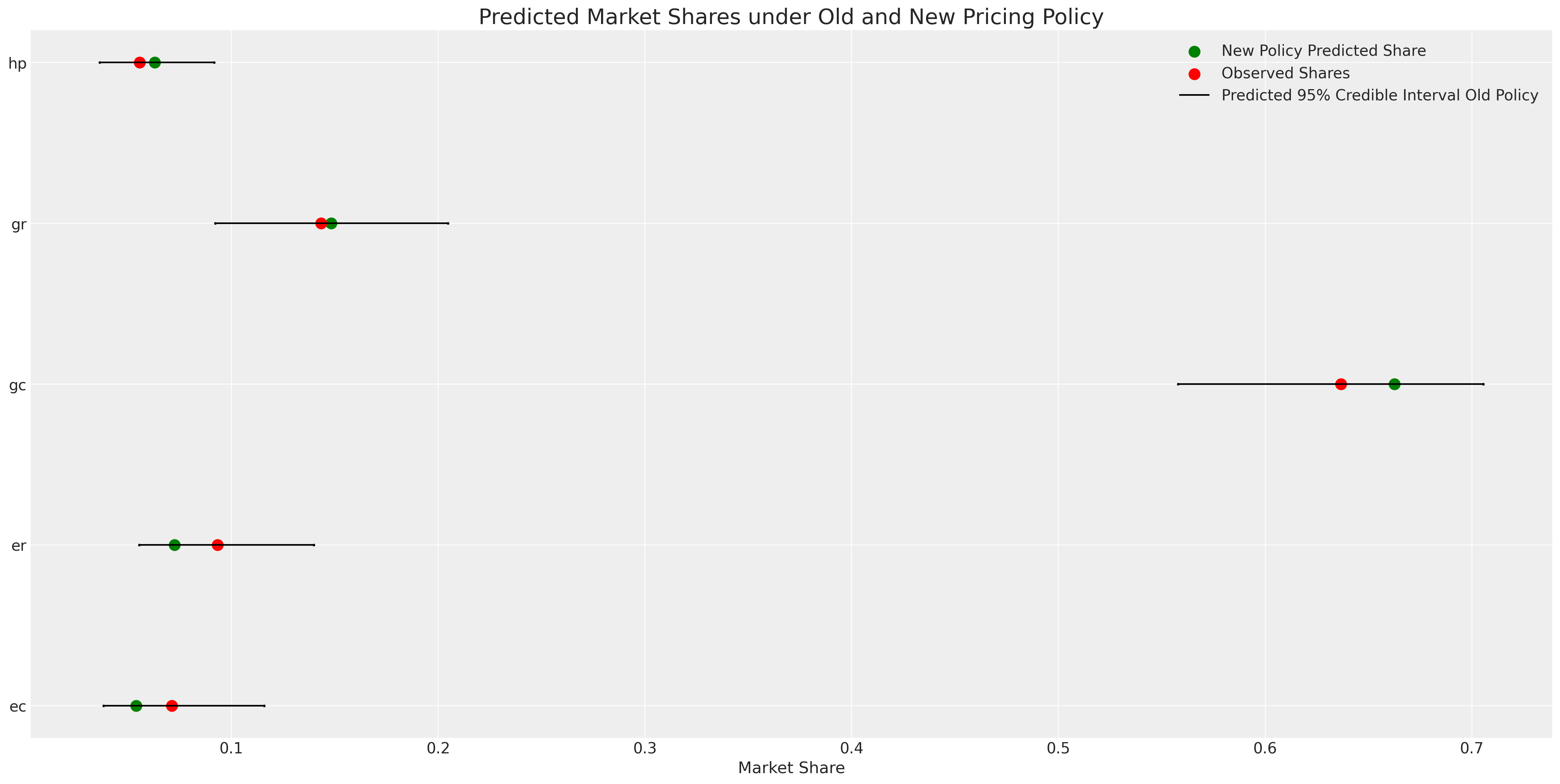
Counterfactual Shares
Model Adequacy and Counterfactuals
Interventions and Conditionalisation
- There is a sharp distinction between conditional probability distributions and probability under intervention
- In PyMC you can implement the do-operator to intervene on the graph that represents your data generating process.
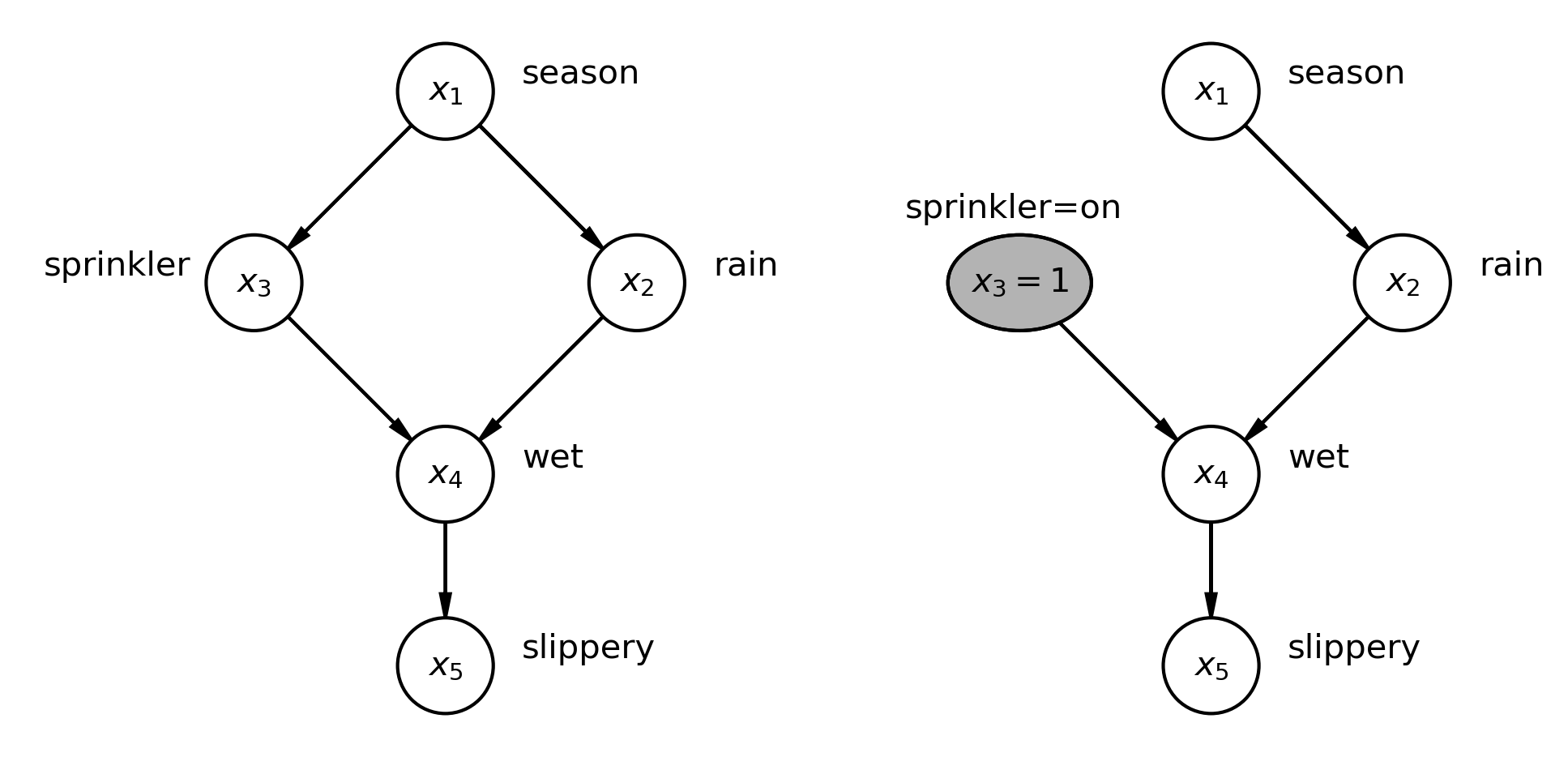
Hierarchical Variations
Inducing covariance structures by allowing individual deviations from mean utilities.
Individual Heterogenous Utility
Repeated Choice and Hierarchical Structure
| person_id | choice_id | chosen | nabisco_price | keebler_price |
|---|---|---|---|---|
| 1 | 1 | nabisco | 3.40 | 2.00 |
| 1 | 2 | nabisco | 3.45 | 2.50 |
| 1 | 3 | keebler | 3.60 | 2.70 |
| 2 | 1 | keebler | 3.48 | 2.20 |
| 2 | 2 | keebler | 3.30 | 2.25 |
Individual Heterogenous Utility
\[ \begin{split} \begin{pmatrix} \color{red}{u_{i, nb}} \\ \color{purple}{u_{i, kb}} \\ \color{orange}{u_{i, sun}} \\ 0 \end{pmatrix} = \begin{pmatrix} (\color{red}{\alpha_{nb}} + \beta_{i}) + \color{blue}{\beta_{p}}p_{nb} + \color{green}{\beta_{disp}}d_{nb} \\ (\color{purple}{\alpha_{kb}} + \beta_{i}) + \color{blue}{\beta_{p}}p_{kb} + \color{green}{\beta_{disp}}d_{kb} \\ (\color{orange}{\alpha_{sun}} + \beta_{i}) + \color{blue}{\beta_{p}}p_{sun} + \color{green}{\beta_{disp}}d_{sun} \\ 0 + 0 + 0 \end{pmatrix} \end{split} \]
Individual Heterogenous Utility
In Code
with pm.Model(coords=coords) as model_4:
beta_feat = pm.TruncatedNormal("beta_feat", 0, 1, upper=10, lower=0)
beta_disp = pm.TruncatedNormal("beta_disp", 0, 1, upper=10, lower=0)
## Stronger Prior on Price to ensure
## an increase in price negatively impacts utility
beta_price = pm.TruncatedNormal("beta_price", 0, 1, upper=0, lower=-10)
alphas = pm.Normal("alpha", 0, 1, dims="alts_intercepts")
beta_individual = pm.Normal("beta_individual", 0, 0.05,
dims=("individuals", "alts_intercepts"))
u0 = (
(alphas[0] + beta_individual[person_indx, 0])
+ beta_disp * c_df["disp.sunshine"]
+ beta_feat * c_df["feat.sunshine"]
+ beta_price * c_df["price.sunshine"]
)
u1 = (
(alphas[1] + beta_individual[person_indx, 1])
+ beta_disp * c_df["disp.keebler"]
+ beta_feat * c_df["feat.keebler"]
+ beta_price * c_df["price.keebler"]
)
u2 = (
(alphas[2] + beta_individual[person_indx, 2])
+ beta_disp * c_df["disp.nabisco"]
+ beta_feat * c_df["feat.nabisco"]
+ beta_price * c_df["price.nabisco"]
)
u3 = np.zeros(N) # Outside Good
s = pm.math.stack([u0, u1, u2, u3]).T
# Reconstruct the total data
## Apply Softmax Transform
p_ = pm.Deterministic("p", pm.math.softmax(s, axis=1), dims=("obs", "alts_probs"))
## Likelihood
choice_obs = pm.Categorical("y_cat", p=p_, observed=observed, dims="obs")
Individual Heterogenous Utility
Recovered Posterior Predictive Distribution
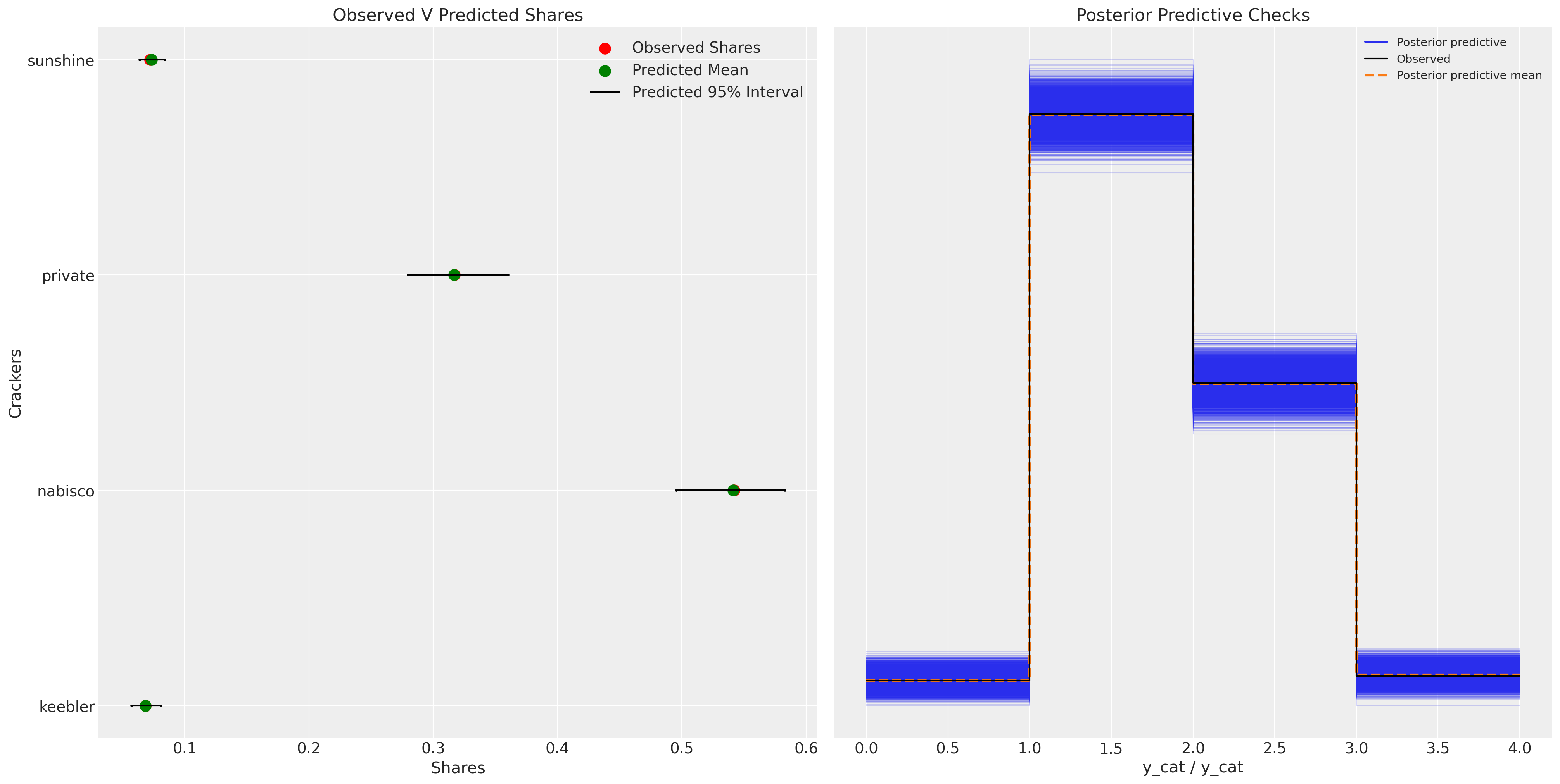
Individual Heterogenous Utility
Individual Preference
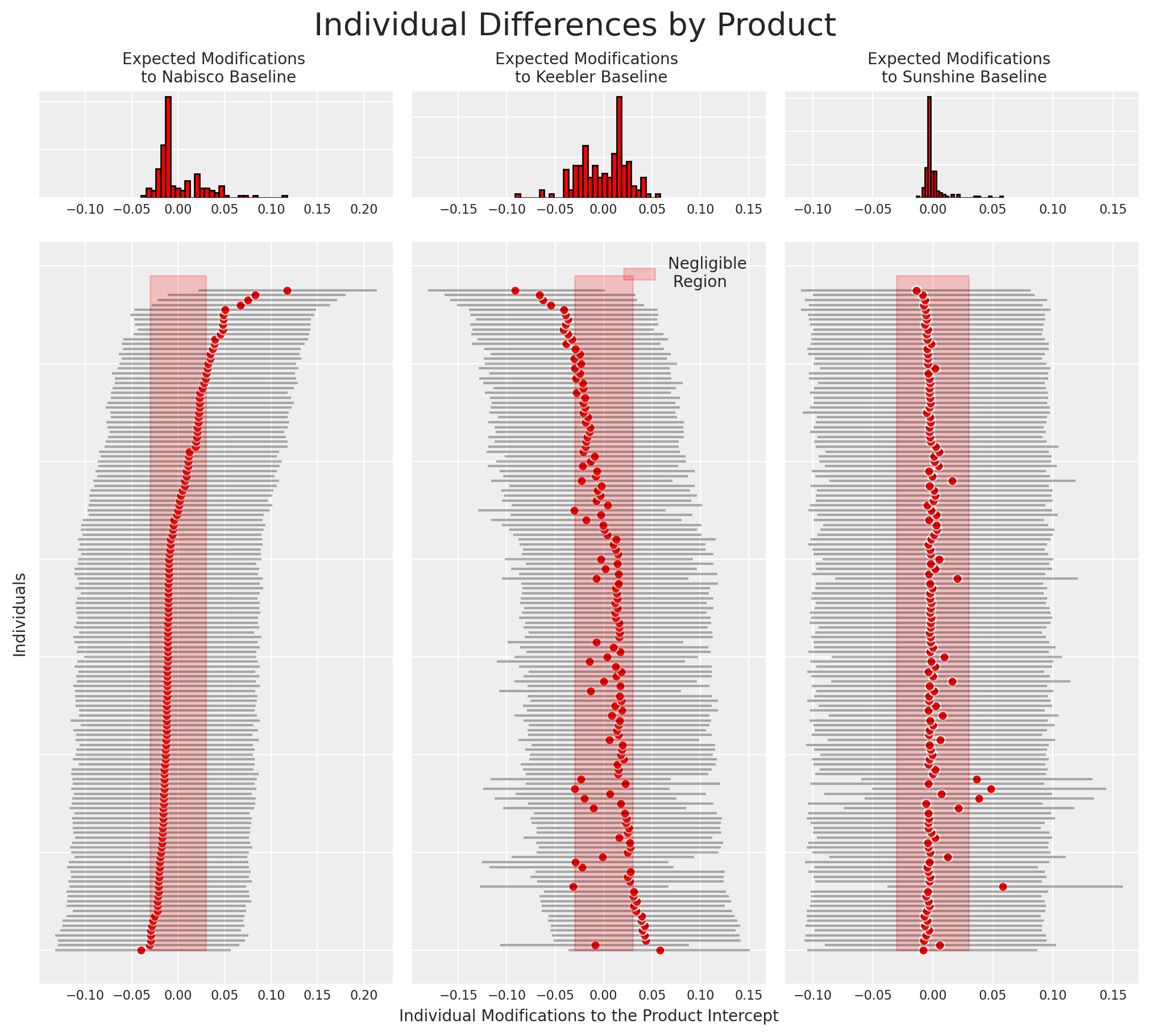
- Individual preferences can be derived from the model in this manner.
- The relationship between preferences over the product offering can be seen too
- Market stable under stable preferences?
Conclusion
The World in the Model
“Models… [are] like sonnets for the poet, [a] means to express accounts of life in exact, short form using languages that may easily abstract or analogise, and involve imaginative choices and even a certain degree of playfulness in expression” - Mary Morgan in The World in the Model
- Models should articulate the relevant structure of this world and other possible ones.
- They serve as microscopes. Simulation systems are tools to interrogate reality.
- Bayesian Conditionalisation calibrates the system against the observed facts.
- Bayesian Discrete choice models help us interrogate aspects of market demand under uncertainty.
- PyMC enables us to easily build and experiment with those models.
- Causal inference is plausible to degree that we can defend the structural assumptions. Bayesian models enforce tranparency and justification of structural commitments and necessary complexity.


Discrete Choice with PyMC